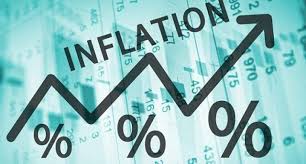New York CNN —
Central bankers across the globe are delivering a message: Slow and steady won’t win the race against inflation.
“If we don’t raise rates now, high inflation can stay with us for longer,” Bank of England Governor Andrew Bailey said after raising interest rates unexpectedly by half a percentage point on Thursday.
Even though inflation is slowing in many countries after more than a year of interest rate hikes, it remains above the 2% level many central banks are targeting.
Raising interest rates is the primary tool central bankers have at their disposal to get inflation down. At the same time, research indicates there’s a lag effect of at least 12 months from when a central bank acts to when its actions are felt across the economy.
That’s why the Federal Reserve paused interest rate hikes at its June meeting after 10 consecutive hikes since last March. Yet many Fed officials are signaling interest rates could go up again next month since they, like Bailey, don’t want to risk losing their grip on inflation if they don’t act now.
Why does now seem to be such a critical juncture?
Central bankers have a very delicate balancing act. For a while it seemed as though they could raise rates without significantly hurting their economies. But now time is catching up. And with inflation still higher than they’d like it to be, the risks of doing too much to get inflation down are on par with not doing enough.
Christine Lagarde, president of the European Central Bank, recently likened rate hikes to a plane flying to a destination.
“At the start, the plane needs to ascend steeply and accelerate fast,” she said in a speech she delivered earlier this month. “But as it gets closer to its target altitude, it can reduce acceleration and retain its existing airspeed. The plane needs to climb high enough to reach its destination – but not so high as to exceed it.”
“The airplane is still climbing – and it will keep going until we have enough speed to glide sustainably and land at our destination,” Lagarde said two weeks before the ECB hiked interest rates by a quarter of a percentage point. Consumer prices in the 20 countries that use the euro rose 6.1% in May, easing from 7% one month prior.
Another way of interpreting Lagarde’s analogy is if the plane doesn’t climb high enough to a safe cruising altitude it could face undue turbulence that prevents it from reaching its destination of 2% inflation .
That’s exactly what worries central bankers.
Sticky inflation could get stickier
One of the reasons central banks have struggled to get inflation down is that certain parts of the economy aren’t responding to rate hikes. For instance, in the US service prices excluding energy are up 6.6% compared to last year, according to May Consumer Price Index data. While last year prices were up 5.2% compared to 2021, it’s become apparent that elevated service prices are sticky.
It’s harder for central banks to clamp down on inflation when it becomes sticky, or persistently high. But it’s not impossible. It’s just a matter of how much pain they are willing to inflict on an economy through rate hikes to get inflation to the desired level.
Taking too long to make that decision bears its own consequences though, said Michael Bordo, an economics professor and director of the Center for Monetary and Financial History at Rutgers University.
“The longer they wait, the more tightening it will take to get inflation back down,” he told CNN. That’s because research shows that inflation, if unaddressed, could become even more sticky and harder for central banks to control with rate hikes.
SOURCE: CNN

